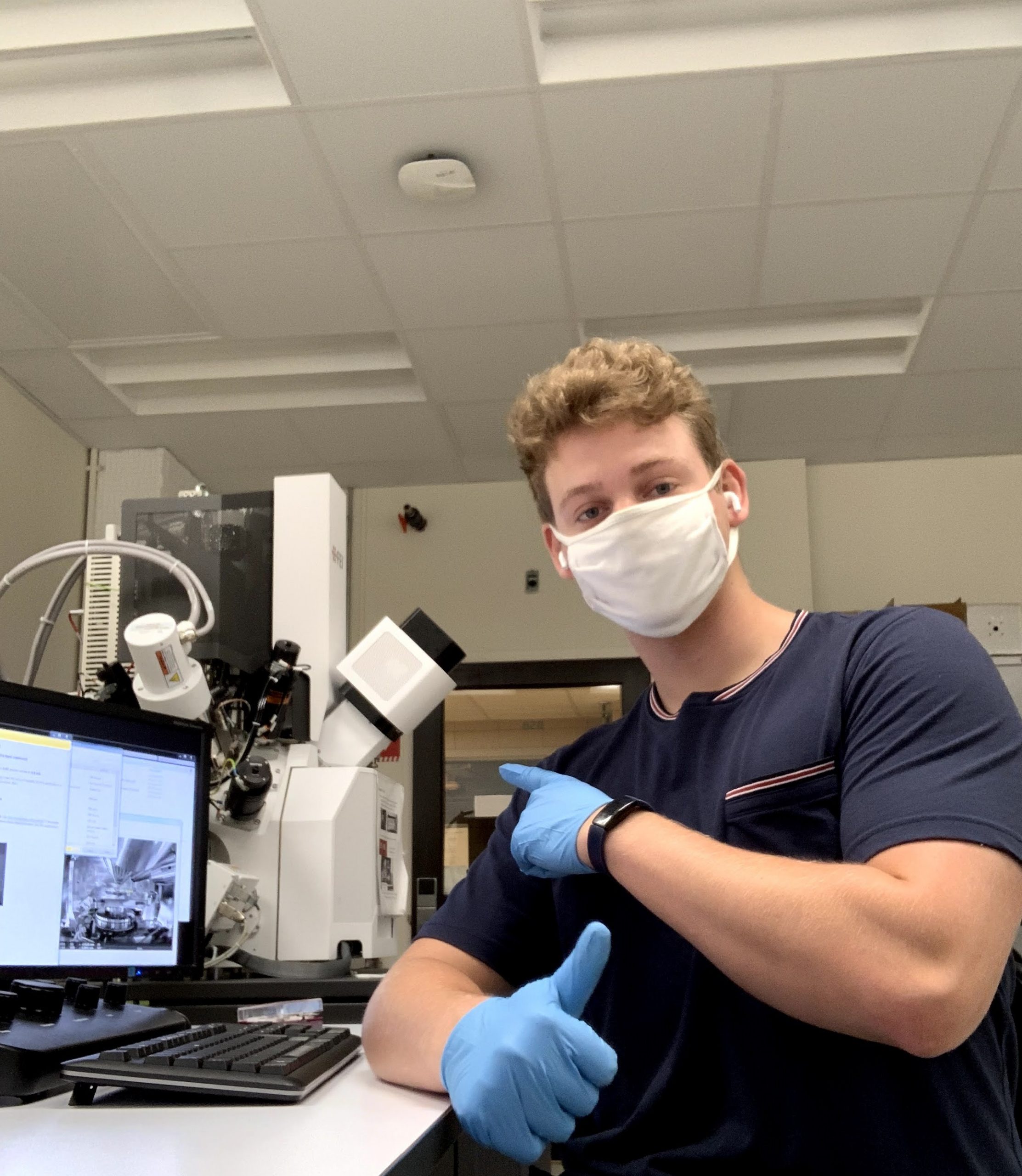Quinten Bradley Yurek

I joined UIUC under the advisement of Professor Shen Dillon. When Professor Dillon
took a job offer at the University of California Irvine, I moved under the advisement
of Professor Jessica Krogstad. Luckily, during this PI switch, I was able to keep
working on my initial project involving hydrogen embrittlement in austenitic
stainless steels. This project means a lot to me because it contributes to a large-
scale materials impact on clean energy. During this switch, I was also introduced to
a few very interesting ceramic materials systems and their unique ferroelastic
properties. I feel that these new projects keep me engaged in my work because
there is always something new going on.
Outside of work I love to bass fish, camp, and play sports on a semi-competitive
level.
Education
Bachelor of Science in Physics, 2019; University of California Riverside; Honors: Cum Laude
Doctorate of Materials Science and Engineering, 2019-Present; The University of Illinois at Urbana Champaign
Ph.D. Candidate
Research Summary
BaTiO3, (1-x)(Bi1/2Na1/2)TiO3-xBaTiO3 x = 0.03, 0.06, 0.09, 0.5Ba(Zr0.2Ti0.8)O3–
0.5(Ba0.7Ca0.3)TiO3
This work is centered around lead-free piezoelectric materials. We are interested in
understanding the governing mechanisms of ferroelastic switching in these
materials. We use in-situ SEM single-crystal micropillar compressions to probe the
ferroelastic switching phenomenon. This work will help understand the intrinsic
toughening of these lead-free piezoelectric materials that could replace some of the
PZT family. Further, piezoelectric cycling leads to device failure due to crack
propagation, so understanding more about what governs ferroelastic switching will
help guide engineering design. Lastly, although this work does not directly
investigate coupled ferroics, the results from both our temperature study and
compositional study will contribute to the lack of knowledge surrounding
ferroelasticity. Which will eventually lead to a better understanding of coupled
ferroic materials.
II. Hydrogen Embrittlement of Austenitic Stainless Steels
Four developmental austenitic stainless steels and one commercial stainless steel
Hydrogen embrittlement is a phenomenon in which hydrogen diffuses into a metal lattice
causing a macroscopic change in material properties. Often hydrogen embrittlement is realized
as a macroscopic loss in ductility, causing the material to become brittle. This causes problems
when alloys that are rated for certain uses undergo embrittlement and fail unexpectedly.
Currently, there are two problems associated with scaling austenitic stainless steels to help the
DOE’s H2@Scale initiative. One is that mass production of current austenitic stainless steels like
AISI-316L is very expensive. This material cost is directly related to the Nickle (Ni) content of
the alloy. A high Ni content is strongly related to hydrogen embrittlement resistance, but it is not
clear why. Secondly, we do not know which alloying choices can lower or replace Ni while
maintaining embrittlement resistance. Therefore, our research project is exploring four
developmental alloys aimed at lowering Ni content while maintaining embrittlement resistance.
All these alloying choices result in a specific cost reduction per kilogram of 32%-50% relative to
the industry standard AISI-316L.
III. CTZ Material
10CeO2-10TiO2-80CZrO2
The CTZ research effort is centered around previous work done by Krogstad group’s
Dr. Charles Smith. This work aims to decern the governing nucleation and growth
mechanism of ferroelastic domains in CTZ. This will help us understand the intrinsic
toughening present in this structural ceramic. Current work involves investigation of
a sectioned pellet of CTZ. The sectioned pellet is clamped back together, and
indentations are placed close to the cross-section facets. Spherical indentation
sections. This will inform us if the nucleation mechanism is strongly linked to shear
stress resolved onto a grain and the orientation relationships of that grain.